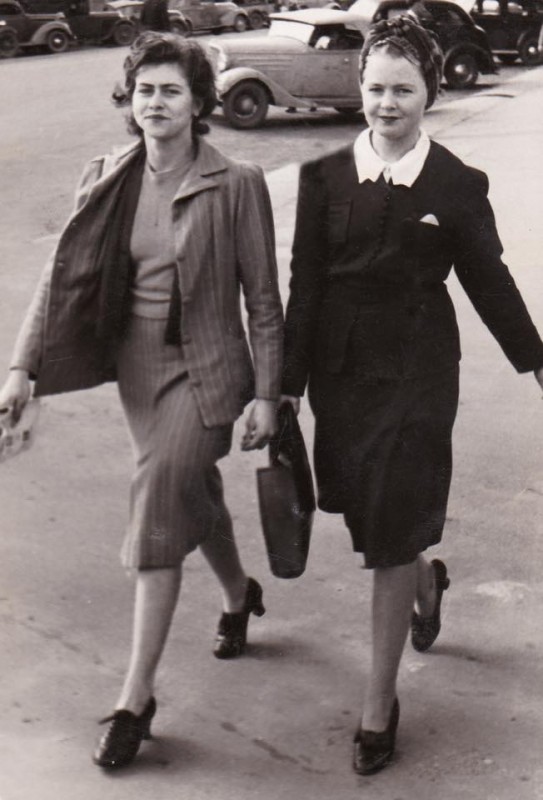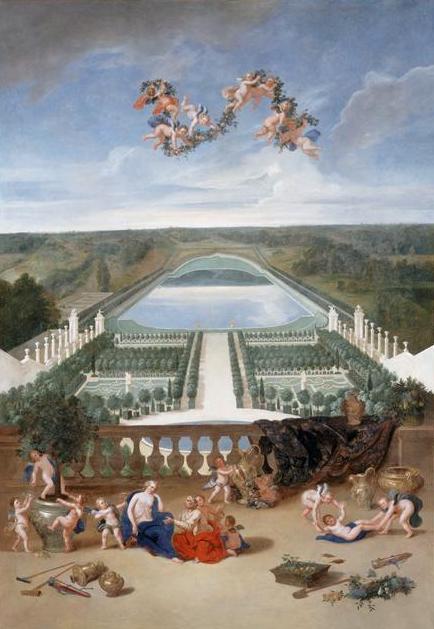Australia’s foreign aid and the development of a regional labour market
In July 2014 Foreign Minister Julie Bishop announced Australia’s new overseas aid framework, much of it foreshadowed in the 2014-2015 budget and the Coalition’s policy at the 2013 Election. Key features include a regional focus in overseas development assistance, the re-emphasis of the Australian national interest, leveraging ODA in extending Australia’s influence, and the elevation of private sector development to the equivalent of human development. An environment conducive to regional economic growth is identified as the key to poverty reduction. All new aid investments must consider private sector growth. Empowerment of women and girls is among the government’s six ODA priorities. Aid programs need to conform to new criteria and be assessed against new performance benchmarks, and aid will not be reinvested in non-performing programs. There’s also the concept of ‘non-conforming recipient states’ which provides a basis for conditionality.
Focusing on an early development program undertaken within this rubric and comparing it with past programs, this essay analyses the Abbott Government’s approach to ODA, identifies potential benefits, potential shortcomings and pitfalls, and attempts to discern to what extent it truly represents a ‘new aid paradigm’.
AusAID was merged within DFAT, reflecting a stated conflation of aid, trade and diplomacy. Within the government’s new rubric of ‘economic diplomacy’ aid is un-self-consciously recast as a tool in the diplomatic arsenal. This approach is evident in the increase in aid to Cambodia as part of an agreement on refugee resettlement, an even larger total increase in assistance to Manus Island at the same time as a decrease to PNG overall (ACFID, 2015), and may be seen as an element in the 39.5% decrease in aid to Indonesia (ACFID, 2015) in the wake of the Australian phone tapping scandal and immediately following the diplomatic furore over the execution of convicted drug traffickers Myuran Sukumaran and Andrew Chan.
The coalition’s platform at the 2013 election included a commitment to increasing the foreign aid program to 0.5% of gross national income (GNI) and thereafter align the growth of ODA to increases in the consumer price index (Wade, 2013). In its 2015-2016 budget the coalition government reduced foreign aid to 0.22% of GNI.
“we will pursue Australia’s national interest in a clear-eyed way that recognises the changing economic realities in our region, and seeks to derive the greatest return possible from Australia’s aid investment” – Julie Bishop[1]
Aid is an investment for which we demand the greatest possible return. It is an essentially economic endeavour and its purpose is to serve the Australian national interest. Couched in this language the current government’s philosophical approach to aid appears a continuation of the neoliberal development project of the past few decades, only that it drops the pretence of being foremost about poverty reduction in recipient communities. Economic diplomacy elicits not only the political utility demonstrated by the Cambodian, Manus Island and Indonesian examples, but aid for the purposes of establishing trading relationships, specifically with Southeast Asian and Pacific Island states.
Little empirical evidence is available yet of the application of the new economic diplomacy paradigm in the aid sphere. DFAT’s Skills for Economic Growth (Solomon Islands) is an aid program currently moving between design and implementation phases. Its focus is post-school technical and vocational education and training (TVET). Its objectives are to provide ‘labour market relevant’ education and training, equitably to male and female, rural and urban, poor and disabled; to develop an integrated network of quality assured post-school institutions across the Solomon Islands, improving career options; and to leave the Solomon Islands with an economically sustainable post-school education system. Though the genesis of this program was a 2012 concept note, the Abbott government adopted it and produced a design document reflecting ‘contextual changes’ (DFAT, 2014). The Abbott Government’s retention of the previous government’s goals and objectives for the program indicates greater continuity in Australian ODA than Minister Bishop’s rhetoric suggests. It is an early exercise of the government’s Pacific Education and Skills Development Agenda and Delivery Strategy (PESDA).
Contextual changes include the establishment of the Solomon Islands National University (SINU) in 2012, development of a domestic education plan and legislative framework, and the conclusion of an EU funded TVET program. This last change occurs at the same time as Australia’s ODA pivots to the Indo-Pacific and may be an early indication of a global trend toward greater regionalisation of development assistance (which deserves exploring in another research exercise).
According to the DFAT design document, the program aligns with the Solomon Island Government’s Budget Strategy and Outlook Paper (2014) which cites the needs of the TVET sector, a commitment to project investment in agriculture, forestry, tourism, commerce and industry, fisheries, lands, mines and energy, finance and banking, and a transport plan flagging improvements in roads, wharves and airports (DFAT, 2014, p.3). These do coincide with ODA priorities outlined by the Abbott Government. The program’s objective of leaving Solomon Islanders with ‘internationally recognised’ qualifications also coincides with the SIG goals of defining skills in demand domestically and internationally and developing a workforce with skills to take advantage of international labour opportunities (DFAT, 2014, p. 3). This infers an approach that not only envisages the development of a labour force to meet Solomon Islands demands but also Australia’s. At the same time the SIG acknowledges contraction of domestic agriculture, forestry and mining sectors, but expects growth in the construction, manufacturing and service sectors, including telecommunications. A thorough exploration of the rationale is not possible in this essay but it indicates the development of a ‘regional’ labour market that would enable for example provision of Australian seasonal agricultural labour (already), the establishment of Solomon Islands call centres servicing Australian businesses in the way India and the Philippines have in the past decade, and fly-in-fly-out miners to Australian enterprises in both the region (such as nearby Bougainville) and mainland Australia. Such possibilities at least in part inform the program design’s conception of private sector partnerships.
This is consistent with the existing neoliberal development approach that for example in the NAFTA context sees manufacturing for the US market occurring in Mexico, and the informal provision of US domestic farm labour. At the 2009 census 45% of the Solomon Islands adult population were in the 15-29 age group, just over 20% of the labour force were in the formal economy, 37.4% were in the informal economy, and the largest proportion (41.7%) were in the subsistence economy (DFAT, 2014). Australia’s 2015 Intergenerational Report projects that by mid-century the number of Australians aged 15-64 per person aged 65 and over will reach 2.7 people, down from 4.5 currently and 7.3 in 1975 (Australian Government Treasury, 2015). Constructing a labour force throughout the nearby Pacific could be in Australia’s national interest. It also coincides with Foreign Minister Bishop’s acknowledgement of remittances as a major source of capital flow to developing countries. If these factors are part of the rationale behind Australia’s aid policy then it probably would represent something of a paradigm shift.
Patrick Kilby (2008) explains the positive impact short term labour migration and associated remittances have on poverty reduction, status of women and employment in the migrant’s country of origin. Kilby observed in 2008 that despite the importance of remittances in the Asia-Pacific region, Australian foreign aid policy remained unmindful of labour migration – if reference was made it was in relation to people trafficking. This appears to have changed. Kilby explains however that unregulated labour migration (such as in the North American example) suits the neoliberal development paradigm, while at the same time minimising remittance generating income and associated development benefits in the home country. Therefore foreign aid policy should address labour migration, regulate it, and create an economic environment that maximises remittances (Kilby, 2008).
The Skills for Economic Growth (Solomon Islands) program has a ten year investment strategy but identifies three short term key result areas (KRAs) centred on the SINU, provincial training, and national system development. Presumably these would in part inform the Australian Government’s performance assessments in the context of a new emphasis on accountability and promise to drop non-performing programs (DFAT, 2015). Controls are necessary, but have the potential for inflexibility and paternalism. The threat of withdrawal of funding itself is a source of wasted, inefficient investment when programs are not seen through to sustainability.
The program design documents acknowledge the low participation and completion rates of women in non-traditional technical education. To address this they will design a specific communication program for women and girls, develop gender neutral courseware and promotional material, provide incentives for training providers, award equal number of scholarships to women and men, and encourage providers to offer study and welfare support.
The program design documents provide commentary about SIG legislation. Of particular relevance to this program the Australian Government suggests changes to the proposed Qualifications Act and to the Education Act, but goes further to describe the Solomon Islands Labour Act and Electricity Act as “out of date” (DFAT, 2014, p. 7). This commentary may stem from a history of involvement in the previous decade when Australia’s ODA, both in general and specifically to the Solomon Islands, had a greater focus on governance (Luke, 2006). The critique of adjunct legislation is consistent with the Abbott Government’s aim of increasing Australia’s influence through ‘economic diplomacy’. Placing it within the design of a development aid program is a case of exercising influence. The related Investment Design: Solomon Islands Education Sector Program 2 document goes further, spelling out the involvement of Australian funded TA in SIG policy development (DFAT, 2014, 2).
Shahar Hameiri (2015) suggests Pacific Island states are embracing Chinese development aid and foreign direct investment (FDI) as a means of securing their own policy objectives and limiting Australian interference in domestic governance processes. In 1997, then new Foreign Minister Alexander Downer released a review of the Australian Aid program entitled “One clear objective: Poverty alleviation through sustainable development”. By 2005 an OECD review indicated Australia’s aid program was failing the global South, its focus shifting from poverty reduction to instead being used as a tool of interventionist foreign policy (O’Connor, Chan, Goodman, 2006). In 2006 Aid/Watch paraphrased the then AusAID Director General, Bruce Davis – ‘the times of just “doing good” with the aid program are now over. Instead the aid program today must focus on ‘building a strategic environment that favours Australia’s interests”’ (cited in O’Connor, Chan, Goodman, 2006). Foreign Minister Julie Bishop’s ‘new aid paradigm’ appears only superficially different from the old one. A point of difference may be the absence of pretence about its major purpose.
The Regional Assistance Mission in Solomon Islands (RAMSI) was an Australian led police and security operation beginning in 2003 in response to civil unrest around issues of customary land ownership and compensation. A year after RAMSI began, DFAT released the report “Solomon Islands, Rebuilding an Island Economy.” According to Aid/Watch the report signalled a shift in RAMSI’s focus from peace-keeping to business promotion. Funded by BHP-Billiton, the report recommended that land holdings in the Solomon Islands be registered, citing communal ownership as a barrier to wealth creation. Commercialisation of land title could enable greater exploitation of Solomon Islands’ mineral resources (O’Connor, Chan, Goodman, 2006).
With the security situation in the Solomon Islands stable the last RAMSI forces were withdrawn in 2013. The Abbott Government’s aid priorities, with an emphasis on private sector investment and economic growth, fit into a narrative which can be traced back through these RAMSI occurrences and the thematically similar Enhanced Cooperation Program in Papua New Guinea. The ‘new aid paradigm’ Skills for Economic Growth (Solomon Islands) program also fits into this narrative as it integrates private sponsors into the picture who will ensure TVET provides Solomon Islanders with the technical skills relevant to labour opportunities resulting from the sponsor’s private enterprise in the region.
‘Since 1997 Australian Aid has been explicitly in the service of the “national interest.” The Government’s definition of the national interest is increasingly centred on countering regional “security threats” with the additional focus on supporting Australian commercial interests.” – Aid/Watch (O’Connor, Chan, Goodman, 2006)
In the past Australian Aid programming has depended heavily on technical assistance (TA), accounting for 40% of total spending compared to an OECD average of 20%[2]. In 2011 ActionAid ranked Australia’s ODA 14th out of 26 major donors due to this emphasis on non-recipient driven TA which ends in the pockets of Australian contractors (cited in Hamieri, 2015). During RAMSI 75% of the annual budget of $200 million was spent on TA (Hamieri). Rather than providing budget support to the Solomon Island Government (SIG) the Skills for Economic Grown (Solomon Islands) program engages a managing contractor, and at least half the program’s senior resources are specialist contractors reporting to DFAT Honiara (DFAT, 2014). The program’s mode of delivery does not represent a new paradigm with regard to TA. However the program is a component of the broader Solomon Islands Education Sector Program 2 for which delivery is described as “Mixed Modality”. Australia’s comparatively heavy reliance on TA is compatible with longstanding orthodoxy that aid programming should generate income for Australian companies, not incidentally prioritising ‘governance’ over ‘government’, an approach which Aid/Watch describe as ‘boomerang aid’ (O’Connor, Chan, Goodman).
The Skills for Economic Grown (Solomon Islands) is a big business, big picture program and this arguably necessitates a high degree of TA and close DFAT control. It isn’t always the delivery mode for Australian ODA. Australia was a major donor in the two year Bangladesh Rural Advancement Committee (BRAC) program ‘Challenging the Frontiers of Poverty Reduction’ (CFPR) beginning in 2002. This highly successful microenterprise program was innovative in that it operated on asset transfer rather than cash funding. In circumstances of deep poverty, cash often necessarily goes into day-to-day survival – short term help rather than sustainable income generation. Give somebody livestock and the outcome is different (Mahmuda et al.). Australia’s involvement was arms-length. It would be interesting to know if customary landholders in Guadalcanal would see more utility in a cow than a technical education and a nearby mine.
Australia’s ODA dedicated to governance (with an emphasis on law and justice) increased from 15% in 2000-2001 to 36% by 2005-2006, while spending on health, education and infrastructure decreased (O’Connor, Chan, Goodman), reflecting the preoccupation with security after 9/11 and the 2002 Bali bombing. By 2012-2013 governance accounted for 18% of ODA and in 2015-2016 it accounts for 10.8%. While this is a marked shift in aid priorities it demonstrates the exceptional circumstances in the years after 9/11 and not the emergence of a new aid paradigm more recently.
The current securitisation of asylum seeker boats is a residual effect of this earlier period. It’s a foreign policy preoccupation which predates and parallels the terrorism threat. Since the Howard Government’s ‘Pacific Solution’, offshore asylum seeker detention and ODA have been explicitly linked. The Nauru example demonstrates the risks of the Australian Government attaching a neoliberal agenda. Howard Government aid conditionality (communicated within MOUs between Australia and Nauru about the management of detention centres) included a study on the privatisation of the telecommunications authority and other state owned enterprises, the reform of power and water services according to the preferred ‘user pays’ option of an Australian TA, public sector reform including reduction in pay and substantial reduction in size of the public service. The result – several state-owned enterprises were privatised, which in a small island state meant the transferral of public monopolies to private monopolies. Government offices are staffed by Australians while privatisation has increased unemployment and resulted in unaffordable and unsustainable services. It has created poverty and Nauru has become aid dependent (MacLellan, 2013).
Australia’s shift in focus to the immediate region is summarised by Tony Abbott as ‘more Jakarta, less Geneva’ (Wade, 2014). In quantitative terms it is expressed in the 2015-2016 budget through a 70% decrease in ODA to Africa, 43% to the Middle-East, a 40% decrease to South and East Asia (excluding Cambodia, Timor-Leste and Nepal) and 10% and 5% in the South Pacific states and Papua New Guinea respectively (Lowy Institute, 2015). This follows a 10% cut in Australia’s overall foreign aid budget in real terms in 2014-2015 (Wade, 2014).
The post-Cold War era saw a growing emphasis on humanitarian intervention, and the consensus around the Millennium Development Goals coincided with a globalisation of aid in which global human rights, poverty reduction and development were seen to contribute to the security and prosperity of all. This was reflected for example in DFAT’s 2003 white paper (Makinda, 2015). In an earlier era ODA and FDI focused on economic and political spheres of influence, such as former colonial possessions. From this perspective Australia’s dramatic cut in ODA to sub-Saharan Africa might be rationalised. In the absence of economic or political imperative, ODA to Africa could only be justified in human development terms, such as tackling poverty, health, education. In this context Australia’s regionalisation of ODA could be representative of a more donor-driven approach. Regionalism is less relevant with a human-centred approach as locus is informed more by greatest need or greatest potential to make a difference.
The Abbott Government’s regional emphasis is an element of its ‘new aid paradigm’. Reduction of ODA to sub-Saharan Africa contrasts with the previous Labor Government’s policy which saw ODA increase in consecutive years to 2013-2014, and the Abbott Government reversed Labor’s decision to join the African Development Bank. Writing after the 23.3% cut in ODA to sub-Saharan Africa in 2014-2015, but before a further 70% cut in 2015-2016, Samuel Makinda (2015) says Australia’s engagement with Africa in recent years was driven by a conception of national interest informed by humanitarianism, support for mining corporations, and the bid for a UN Security Council seat. Makinda cites the 2012 Hollway review – ‘choosing aid activities because of specific national interests is, and should remain, the exception.’ (Hollway et al 2012, cited in Makinda 2015, p. 58). Makinda describes a more sectoral rather than regional approach in which Australia tackled problems where it was best able to make a difference in relation to the Millennium Development Goals. If that were the modus operandi of the previous government then the Abbott Government has moved markedly away from it. Makinda’s reference to the MDGs incidentally highlights the need for a new frame of reference after 2015, a new paradigm.
However Makinda argues that sustaining ODA to Africa remains in Australia’s national interest. He says “the strongest rationale for Australia’s development assistance to Africa remains the moral humanitarian imperative to reduce global poverty” (Makinda, 2015, p.59). He highlights Australia’s soft-power influence, extended for example through scholarships that brought African students and 90 cents for every scholarship dollar back to Australia. There remains an economic interest – 200 Australian based mining and exploration companies operate in 42 African countries, representing an AU$65 billion investment in the resources sector. Average annual rate of growth in African economies was 5.7% between 2002 and 2012 (Carr 2012, cited in Makinda, p.63). Africa’s growing middle class will see consumer spending reach US$1.4 trillion by 2020 (Mckinsey Global Institute 2010, cited in Makinda, p. 62). Finally, the multilateral imperative – the need for African support in Australia’s bid for a UN Security Council seat – remains. Makinda explains that historically Australia has served on the UN Security Council every 10 years or so, the gap between 1986 and 2013 being the exception. Altogether this highlights that Australia’s prioritisation of ODA to Africa comes at a cost to diplomatic and trade interests. What Africa can’t provide though is a regional labour force.
Though the term ‘user led’ appeared briefly in the Minister’s statement launching the new aid paradigm, the principle of Australian national interest restricts the interests of recipient states in program scope. While infrastructure, agriculture, fisheries and water management are particular development foci, the term ‘sustainability’ is conceived as something pertaining to ‘resources’, and use of the term ‘environment’ appears limited to “enabling environment for business, investment and innovation”. FDI is an indispensable component of development capital, but emphasis on the private sector, particularly in the context of public sector reform, can be symptomatic of a rigid ideological approach that results in outcomes such as the Nauru experience. The profit motive invariably places short-term pressure on returns from development. Australia’s aid should not be conceived as an instrument to extract surpluses in our favour.
References to Solomon Islands’ Electricity and Labour Acts couched within an aid program delivery design are reminiscent of the Nauruan detention centre MOUs and could signal the type of reform agenda that neoliberal conditionality foisted on developing countries in previous decades. Chinese aid is an alternative, and it’s doubtful the Australian national interest is served by driving Pacific Island neighbours in that direction.
Kilby (2008) explains how Australia came slowly to the neoliberal project. What we may be seeing exercised through foreign aid policy is more than an incremental advancement in that agenda, one that liberalises not only trade and investment, but a regional labour market. The new aid paradigm probably does represent evolution in Australian ODA.
References
ACFID. “Federal Budget Analysis, 2014-2015.” Deakin ACT: Australian Council for International Development, 15 May 2014.
ACFID. “Federal Budget Analysis, 2015-2017.” Deakin ACT: Australian Council for International Development, 14 May 2015.
Australian Government Treasury. “2015 Intergenerational Report.” Canberra: Commonwealth of Australia, 2015. Web, Accessed 1 Jun 2015 at http://www.treasury.gov.au/PublicationsAndMedia/Publications/2015/2015-Intergenerational-Report
Australian Government Department Of Foreign Affairs And Trade. “Education Sector Program – Skills For Economic Growth (Solomon Islands): Investment Design Document”. Canberra: Commonwealth of Australia, 2014. Accessed 31 May 2015 at http://dfat.gov.au/about-us/grants-tenders-funding/tenders/business-notifications/Pages/education-sector-program-skills-for-economic-growth-solomon-islands-investment-design-document.aspx
Australian Government Department Of Foreign Affairs And Trade. “Investment Design: Solomon Islands Education Sector Program 2”. Canberra: Commonwealth of Australia, 2014. Accessed 31 May 2015 at http://dfat.gov.au/about-us/grants-tenders-funding/tenders/business-notifications/Documents/solomon-islands-education-sector-program-2-draft-qae.pdf
Australian Government Department Of Foreign Affairs and Trade. “Australia’s new development policy and performance framework: a summary”. Canberra: Commonwealth of Australia, 2015. Accessed 1 June 2015 at http://dfat.gov.au/about-us/publications/Documents/aid-policy-summary-doc.pdf
Browne, Stephen. Aid & Influence: Do Donors Help or Hinder? London: Earthscan, 2006.
Hameiri, Shahar. “China’s ‘charm offensive’ in the Pacific and Australia’s Regional order.” The Pacific Review, 1 February 2015, p.1-24
Kilby, Patrick. “Migrant Labour, and the neoliberal development paradigm: balancing the contradiction in the Australian Aid program.” Australian Journal of International Affairs, Vol. 62, No. 3, September 2008, pp. 345-356.
Lowy Institute for International Policy. ‘Australian Foreign Aid’. 2015. Accessed 31 May 2015 at http://www.lowyinstitute.org/issues/australian-foreign-aid
Luke, Garth. “Australian Aid: A Mixed Bag.” Conflict, Security and Development: The Reality of Aid, Asia Pacific Edition 2006. Quezon City: IBON, 2006. Pp 73-77.
Maclellan, Nic. “What has Australia done to Nauru?: Politics, privatisation and policing under the ‘Pacific solution’” [online]. Overland, No. 212, Spring 2013: 4-11. Availability: <http://search.informit.com.au/documentSummary;dn=201223853;res=IELAPA> ISSN: 0030-7416. [cited 11 Apr 15].
Mahadevan, Renuka and Asafu-Adjaye, John. “Exploiting comparative advantage in agriculture and resources: the way forward for Small Island States.” The Australian journal of Agricultural and Resource Economics, 57, pp. 320-343.
Mahmuda, Ismat and Baskaran, Angathevar and Pancholi, Jatin. “Financing Social Innovation for Poverty Reduction: A Case Study of Microfinancing and Microenterprise Development in Bangladesh.” Science, Technology and Society, 2014, Vol. 19:2. Pp. 249-273.
Makinda, Samuel. “Between Jakarta and Geneva: why Abbott needs to view Africa as a great opportunity.” Australian Journal of International Affairs, 2015, Vol.69( 1), p.53-68
O’Connor, Tim; Chan, Sharni and Godman, Dr James. “Australian Aid: Promoting Insecurity.” Conflict, Security and Development: The Reality of Aid, Asia Pacific Edition 2006. Quezon City: IBON, 2006. Pp 78-92.
Padilla, Arnold and Tomlinson, Brian. “World Aid Trends.” Conflict, Security and Development: The Reality of Aid, Asia Pacific Edition 2006. Quezon City: IBON, 2006. Pp 44-69.
Wade, Geoff. “Issues in Australian Foreign Policy: January to June 2014.” Australian Journal of Politics and History, 2014, Vol.60(4), pp.606-620



 as their taxi inched along. “We can take a shortcut through Marie Antoinette’s Estate.”
as their taxi inched along. “We can take a shortcut through Marie Antoinette’s Estate.”